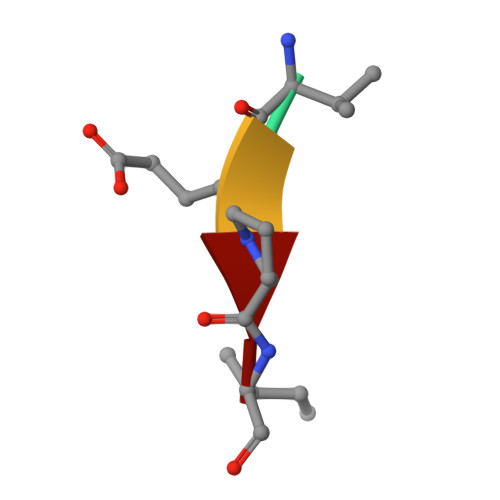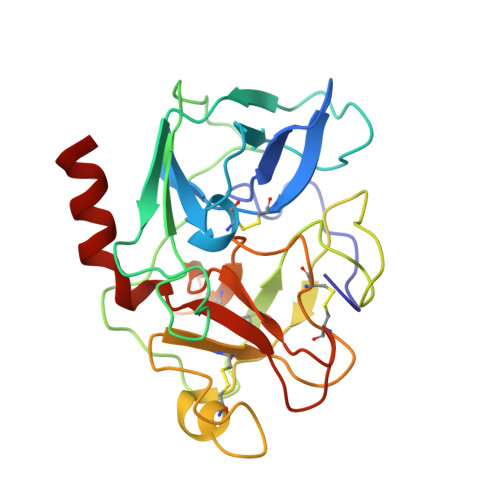X-Ray Snapshots of Serine Protease Catalysis Reveal a Tetrahedral Intermediate
Wilmouth, R.C., Edman, K., Neutze, R., Wright, P.A., Clifton, I.J., Schneider, T.R., Schofield, C.J., Hajdu, J.(2001) Nat Struct Biol 8: 689
- PubMed: 11473259
- DOI: https://doi.org/10.1038/90401
- Primary Citation of Related Structures:
1HAX, 1HAY, 1HAZ, 1HB0 - PubMed Abstract:
Studies on the catalytic mechanism and inhibition of serine proteases are widely used as paradigms for teaching enzyme catalysis. Ground-breaking work on the structures of chymotrypsin and subtilisin led to the idea of a conserved catalytic triad formed by the active site Ser, His and Asp residues. An oxyanion hole, consisting of the peptide amide of the active site serine and a neighbouring glycine, was identified, and hydrogen bonding in the oxyanion hole was suggested to stabilize the two proposed tetrahedral intermediates on the catalytic pathway. Here we show electron density changes consistent with the formation of a tetrahedral intermediate during the hydrolysis of an acyl-enzyme complex formed between a natural heptapeptide and elastase. No electron density for an enzyme-product complex was observed. The structures also suggest a mechanism for the synchronization of hydrolysis and peptide release triggered by the conversion of the sp2 hybridized carbonyl carbon to an sp3 carbon in the tetrahedral intermediate. This affects the location of the peptide in the active site cleft, triggering the collapse of a hydrogen bonding network between the peptide and the beta-sheet of the active site.
Organizational Affiliation:
The Dyson Perrins Laboratory and Oxford Centre for Molecular Sciences, University of Oxford, South Parks Road, Oxford OX1 3QY, UK.

















